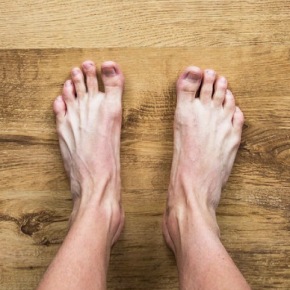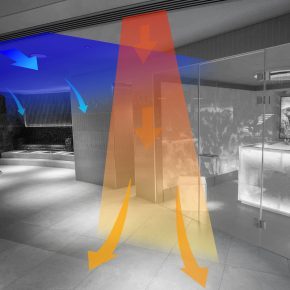
How to reduce creaking floors with Hush Acoustics
This article from Hush Acoustics outlines the causes of the annoyance that is creaking floors, as well as solutions to help deal with the issue.
“Creaky noises arising from floorboards are irritating and we have all most likely experienced the frustration of this in our lifetime, whether at home or in a building we have visited.
We have found that most commonly, creaks or squeaks tend to occur in older buildings, however we have also still experienced this within newer buildings too. The creaking noises tend to be amplified through footsteps to the affected area which can be a real nuisance for those having to endure this on a daily basis.
Causes of creaking floors
There are a number of reasons for creaky floors. These can be; friction caused between two hard surfaces rubbing together, movement in a floor, incorrect installation of a timber structure, flex in the joists, incorrect fixings or joists that are not level.
A lot of structural flooring used in todays new build development is tongue and grooved. This should help prevent some movement and creaking issues if installed correctly by allowing the flooring to act independently to the joists.
However, in some cases the floorboards are square edged, which can cause friction when rubbing together and can in turn create the annoying creak when walked over.
In addition to this when floorboards are nailed down to the timber joists, over time, the timber dries out and the floorboards then start to move up and down, which causes the bothersome squeak against the nail shaft itself.
Another trigger of aggravating creaks or squeaks are when there are slight gaps or cavities between the timber Joists and the timber structural floor.
Timber is a natural product and is used for joists within buildings. With natural products, we cannot expect for these to be completely flat or evenly level and as a result of this, when floorboards are laid over the top of the irregular joists, cavities can occur between the joist tops and the flooring and will cause the floorboards to depress when walked over.
In turn this creates the unwanted noise from the floorboard moving.
How we can help to reduce creaking floors
In order to tackle creaky floors, either the whole floor or specific floorboards must be treated.
Solution 1 – Replace problem floors in existing buildings or prevent in new build situations
In the first instance, to treat the whole floor, we would initially recommend for the floorboards to be completely removed, this can be done very carefully if the flooring is to be re-used.
Once the floorboards are removed, the joists must be checked removing all nails. After checking the joists, if there are any uneven areas or different depths within the wood, Timber Shims can be added to the top. A Timber Shim is a thin wedge of wood that is secured to the joists to make them level.
Once the joists have been levelled out as much as possible, we would recommend our Hush-10 Joist Strips to be applied to the top of the joists.
These joist strips are made from our unique felt and are used for two reasons, to rid of any remaining unevenness in the joists and also to provide additional isolation, providing an acoustically dampened floor.
Once this preparation has been made, either the existing flooring can be re-fitted, or our Hush Panel 28 can be floated over the strips to provide a fully floating structural floor.
Hush Panel 28 has been designed and developed as a sound reducing floor panel which can be used as either a structural or overlay floor board (Hush Panel 28 to be used if joist centres are no more than 400mm. Other Hush products to be used if centres are wider).
Excellent results are achieved in both refurbishment and new build projects when using Hush-Panel 28 as part of a sound insulation system for separating floors.
If Hush Panel 28 is used, it will need to be isolated at the perimeter walls using our Hush Seal 20 ensuring no unwanted noise or noise nuisance will occur around the finished acoustic floor treatment.
We would always recommend the Hush Slab 100 Sound Absorber is added between the joists to improve the acoustic performance when the floor is removed.
Solution 2 – Retrofit solution
In order to tackle creaking or squeaking of floorboards underneath carpeted or other floor finished areas, the offending floorboards must be screwed down very tightly.
Once fixed down, our Hush Mat 15 can then be laid over the floor. Hush Mat 15 is our uniquely engineered acoustic rubber matting. It contains high levels of mass, contributing to airborne sound reduction, giving excellent impact sound reducing performance.
Hush Mat 15 acts as an acoustic underlay, without the need for any additional carpet underlay and therefore dampens the noise from the contributing factors to creaky floorboards.
Next Steps
If you are experiencing problems with creaky floors in your home or within your building and would like our professional advice on how to reduce these noises, please do not hesitate to contact us on 0151 933 2026 or alternatively by email info@hushacoustics.co.uk”
Hush Acoustics Ltd
Unit 2, Tinsley Industrial Estate
Shepcote Way
Sheffield
South Yorkshire
S9 1TH
Tel: 0114 551 8685
Fax: 0151 944 1146
Visit Supplier's page
Latest news

2nd April 2025
FIT Show 2025 Launches Innovative Marketplace Feature to Enhancing Value for Installers
FIT Show, the UK’s leading event for the window, door, flat glass, hardware, and roofing industries, is excited to announce the launch of a brand new Marketplace feature at its upcoming 2025 event (Birmingham NEC, 29 April – 1 May).
Posted in Architectural Ironmongery, Articles, Building Industry Events, Building Industry News, Building Products & Structures, Doors, Exhibitions and Conferences, Glass, Glazing, Hand Tools, Innovations & New Products, Plant, Equipment and Hire, Power Tools, Restoration & Refurbishment, Retrofit & Renovation, Roofs, Seminars, Training, Windows
2nd April 2025
Hi-spec deployment of EJOT Colorfast at new Birmingham logistics park
EJOT Colorfast fasteners have been used extensively in the construction of eight new high-specification warehousing and logistics buildings at the Urban 8 Logistics Park in King’s Norton, Birmingham.
Posted in Articles, Building Industry News, Building Products & Structures, Building Systems, Case Studies, Facades, Restoration & Refurbishment, Retrofit & Renovation, Roofs, Walls
2nd April 2025
SWA member delivers ‘fresh Hope’ for university’s Sustainable Building department
A detailed contract to restore an iconic Art Deco building in the heart of Birmingham’s Jewellery Quarter was carried out by Steel Window Association member, The Window Repair Company (Northwest) Limited.
Posted in Articles, Building Associations & Institutes, Building Industry News, Building Products & Structures, Building Systems, Case Studies, Glass, Glazing, Restoration & Refurbishment, Retrofit & Renovation, Steel and Structural Frames, Sustainability & Energy Efficiency, Windows
1st April 2025
Gilberts Takes Thermal Comfort to New Heights
Gilberts Blackpool is continuing to build on its reputation as a pioneer with the unveiling of ThermaAstute™ – the most extensive range of thermally sensitive diffusers in the market.
Posted in Air Conditioning, Articles, Building Industry News, Building Products & Structures, Building Services, Facility Management & Building Services, Heating, Ventilation and Air Conditioning - HVAC, Innovations & New Products, Restoration & Refurbishment, Retrofit & Renovation, Sustainability & Energy Efficiency
 Sign up:
Sign up: